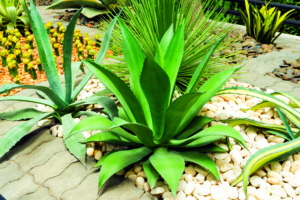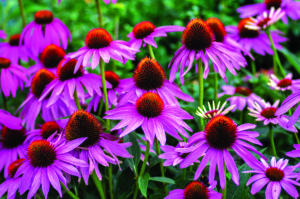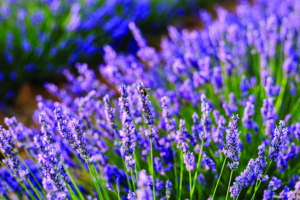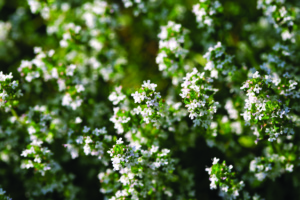Xeriscape: Best Plants for a Low-Water Landscape
Article by | Rachael Baihn Courtesy of Tom Kraeutler, The Money Pit
https://www.moneypit.com/xeriscape-best-plants-for-a-low-water-landscape/
Xeriscaping doesn’t mean zero flowers and plants in your landscape. You can conserve water by using more than a bunch of rocks and some cactus. Xeriscaping is a low-water landscape design that is popular in arid and semi-arid climates because it’s a way to garden without irrigation. In other words, it’s a yard that’s is sustained on the water nature provides. It’s low maintenance, and it makes looking at your water bill a little easier every month. Here are the six best plants for a low water landscape.
Purple Coneflower
This popular perennial produces long-lasting flowers with stems that can grow up to 5-feet high. It blooms from April through September with very little care or water. The purple coneflower is also an excellent source of nectar for butterflies, birds, and bees, so don’t be surprised if you see a flurry of them in your garden. Its flower has many uses, including as a medicinal tea to treat mild infections and help strengthen the immune system.
Cactus
Cacti are a branch of the succulent family, and they immediately come to mind when you talk about a low-water landscape design. The tall saguaro cactus native to Arizona, or the prickly pear cactus common throughout the Southwest are some of the most popular. They add visual interest to any xeriscape garden, and are famous for being low maintenance and highly drought tolerant. If you plant some of the varieties that have sharp needles, it’s a good idea to trim the spines, so curious pets or young children don’t learn a painful lesson!
Agave
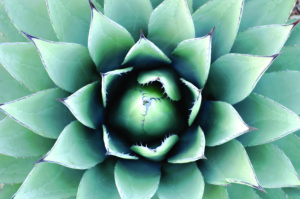 You may think tequila when someone mentions agave — and you’d be right. Tequila comes from the blue agave plant. The blue agave and its cousins are also a fantastic xeric plant that adds texture and color to your low-water landscape. But remember when planting agave that it can get very tall and wide, and the stem can grow as high as 30 feet.
You may think tequila when someone mentions agave — and you’d be right. Tequila comes from the blue agave plant. The blue agave and its cousins are also a fantastic xeric plant that adds texture and color to your low-water landscape. But remember when planting agave that it can get very tall and wide, and the stem can grow as high as 30 feet.
Lavender
Add some fragrance and a pop of purple to your xeriscape with lavender. The plant originated in the arid Middle East and doesn’t need much water to get by. Drought-tolerant, lavender plants don’t like having soggy roots. You need to take it easy on mulching a flower bed planted with lavender.
Parsley
Herbs are famous for being low-maintenance, and they’re handy when you’re cooking and you want a little extra flavor. Parsley is more than a garnish — it’s rich in vitamin C, antioxidants and minerals. It’s so drought tolerant that parsley is better when it’s put under stress by lack of water. This green will add the same frilly visual interest to your landscaping as it does to your plate.
Sage
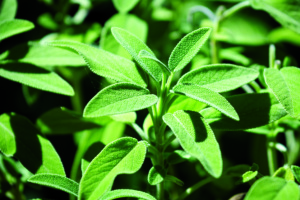 Sage is another drought-tolerant herb that you may associate more with your kitchen cabinet than with your landscaping. But not all sage varieties are for cooking. Varieties like pineapple sage and Russian sage will add color and dimension to your landscaping. Garden sage, which is what you may have tasted in your Thanksgiving stuffing, is also a drought-tolerant variety well suited for a low-water landscape.
Sage is another drought-tolerant herb that you may associate more with your kitchen cabinet than with your landscaping. But not all sage varieties are for cooking. Varieties like pineapple sage and Russian sage will add color and dimension to your landscaping. Garden sage, which is what you may have tasted in your Thanksgiving stuffing, is also a drought-tolerant variety well suited for a low-water landscape.
Rosemary
You might mistake rosemary for an evergreen, with its fragrant needles and hardy disposition. It’s actually a member of the mint family. It’s also a drought tolerant ornamental that can be left to grow on its own, or trimmed into hedges. Yes, it is edible and wonderful to smell, meaning it can dress up your yard and add flavor to a meal.
Thyme
Thyme is the last herb listed in that old Simon & Garfunkel song, “Scarborough Fair.” You know — “parsley, sage, rosemary, and thyme”. The songwriting duo may have been thinking of low-water landscaping as they wrote those iconic lyrics. Thyme is a hardy addition to a xeriscaped yard. It’s a member of the mint family and loves full sun. Use it to flavor your food and to add greenery without adding to your water bill.
Xeriscaping is popular in parts of the country like Las Vegas and Phoenix where the hot, desert climate makes maintaining a traditional green lawn very difficult. However, low-water landscapes can be used in virtually any part of the nation. Coupled with a drip-irrigation system, they can deliver continuous color while reducing monthly water bills.
Finally, keep in mind that xeriscaping does not mean getting rid of the grass. In fact, the rocks and hardy plants can be good neighbors with your lush, green lawn, while making your yard easier to keep up.
